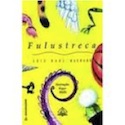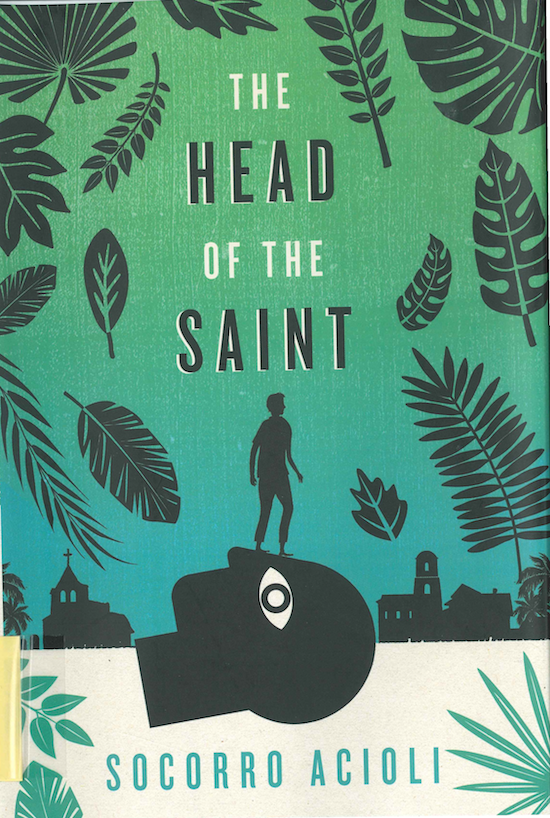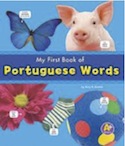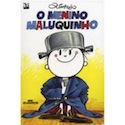Brazil/Portuguese Language and Culture Kit
Along the River. Starkoff, Vanina, Ill. Springer, Jane, Translator. Groundwood Books 2017. ISBN: 9781554989775.
This vibrant picture book from Brazil depicts the joy of the journey, showing in simple yet detailed illustrations the people you might meet along the way, the sights you might see and the food you might eat.

Amazon Boy. Lewin, Ted. Macmillan Publishing Company, 1993. ISBN: 9780027573831.
Paulo and his father travel downriver on a small steamer, see fishermen selling their catch in the city’s harbor, and admire a huge filhote, endangered by overfishing. After wandering the market, they set out for home, the father commenting sadly on the thoughtless depredation of forest and river.
Amazon Rain Forest. Heinrichs, Ann. Benchmark Books, 2009. ISBN: 9780761439325.
Presents comprehensive information on the geography, history, wildlife, peoples, and environmental issues of the Amazon Rain Forest.
Amazonia: Indigenous Tales from Brazil. Munduruku, Daniel. Popov, Nikolai, Ill. Groundwood Books. 2013. ISBN: 9781554981854.
Amazonia is an extraordinary book of Brazilian folk tales that combines the authentic voice of Munduruku, an Indian who grew up in the Amazon rainforest. The stories are fascinating, and sometimes startling, as protagonists are killed off or transformed into animals, or rise up the heavens. More than just adventures, they offer a panorama of experience; conflict and death, love and seduction, greed and gluttony, hunting and fishing, cooking and caring for plants, and describe the origins of the natural world.
Asphalt Angels. Holtwijk, Ineke. Front Street, 1995. ISBN: 9781886910249.
This novel by a Dutch journalist graphically depicts life on the streets for a 13-year-old boy in Rio de Janeiro after his mother dies. Glue sniffing, stealing, prostitution, and panhandling are all part of the daily routine for Alex’s gang, called the Asphalt Angels, headed by a 19-year-old thief and his 16-year-old “wife,” and whose youngest member is a 10-year-old addict. The author based the novel on a boy she met in a shelter for street children in Rio. Alex is a sympathetic protagonist, living the roughest life a child could have. His greatest wish is for a mother and a bed.
Best Tailor in Pinbauê. Toledo, Eymard. Triangle Square, 2017. ISBN: 9781609808045.
Uncle Flores is the best tailor in the small river town of Pinbauê in Brazil. He used to make beautiful dresses and colorful costumes for the carnival, but nowadays he only makes gray uniforms for the factory workers. Edinho, his nephew, comes by every day after school to help cut and iron the cloth and listen to his uncle’s stories. The best ones begin with “Once upon a time….” But when the factory tells Uncle Flores they don’t need his uniforms anymore, Edinho comes up with an ingenious idea to get his uncle back to work and make everyone in town happier and brighter. Soon Uncle Flores’s house is the most popular one in town….

Brown Bear, Brown Bear, What do you See? Urso Castanho, Urso Castanho, O Que é Que Tu Vês? Martin, Bill, Jr. Carle, Eric, Ill. Mantra Lingua, 2010. ISBN: 9781844441594.
A big happy frog, a plump purple cat, a handsome blue horse, and a soft yellow duck all parade across the pages of this delightful book about colors. This edition is bilingual, Portuguese and English.
Capoeira. Ancona, George. Lee & Low Books, Inc., 2007. ISBN: 9781584302681.
Full-color photos and lively text introduce a sport that “combines dance, music, and acrobatics with fighting techniques.” Ancona explains the basics of the game before delving into its history, helping readers with no background on the subject gain an understanding of the art before putting it into context. His discussion of the beginnings of capoeira, which was developed primarily by African slaves, brought to Brazil. Short biographies of the two founders of the sport’s most common modern schools are presented before returning to modern photographs that show some of the differences in styles of play.
Carnaval. Ancona, George. Harcourt Brace, 1999. ISBN: 9780152017934.
This For weeks the people of the Brazilian town of Olinda have been sewing costumes, painting masks, and creating giant puppets–preparing for carnaval. Like Mardi Gras in New Orleans, carnaval is a five-day festival of parades, dancing, and singing. But unlike Mardi Gras, Olinda’s carnaval still celebrates the traditions and folklore of the people and the shared cultures–indigenous, European, and African–that make up Brazil. As generations have done each year, the people of Olinda and their visitors give themselves over to the music, dance, and joy of carnaval.

Cássio’s Day: From Dawn to Dusk in a Brazilian Village. Campos, Maria de Fatima. Frances Lincoln Children’s Books, 2010. ISBN: 9781847800916.
Cássio spends much of his school day outside, and he really likes learning to grow vegetables in the school garden. He and his friend push each other home from school in Cássio’s carrinho (“barrow”), stopping to buy their favorite sweets (doce-de-leite) on the way. Cássio’s shows the daily life and experiences of children in rural Brazil. It also contains a glossary of words and customs in Portuguese.
The Dancing Turtle: A Folktale from Brazil. DeSpain, Pleasant. Boston, David, Ill. August House Little Folk, 1998. ISBN: 9780874835021.
The main character of this Brazilian trickster tale is a chubby turtle with an engaging smile, which loves to play her flute and dance. A man captures her and takes her home for a turtle-soup feast the next day. That afternoon, when he leaves her in his son and daughter’s care, Turtle promises to dance for the children if they let her out of the cage. Once freed, Turtle pretends to fall asleep, and escapes. The father returns home and vows to recapture the cunning animal. An ambiguous conclusion allows readers to determine Turtle’s fate. An introductory source note explains that although indigenous peoples of Brazil created this folktale, it is now also told as far away as Nicaragua and Costa Rica.
For the Love of Soccer. Pelé. Morrison, Frank. Hyperion Books, 2010. ISBN: 9781423115380.
In his first book for children, Pelé offers a recap of his illustrious career in terms that are general enough to give artist Morrison latitude to tell two stories at once. Facing pages simultaneously track the renowned Brazilian from childhood to superstardom while following an androgynous young soccer enthusiast through practice sessions and games on an urban pitch. Both figures explode with infectious, winning enthusiasm and are usually posed in midair, arms and legs flung wide to propel a ball past opponents and into the goal. A more detailed version of Pelé’s accomplishments caps this double introduction to the world’s most popular sport and to one of its most endearingly popular figures.
From Another World. Machado, Ana Maria. Brandão, Lucia, Ill. Groundwood Books, 2002. ISBN-13: 9780888996411.
When their parents decide to turn a farmhouse and its outbuildings into a country inn, Mariano and his friends spend a night in the very old barnlike annex, which has been renovated and partitioned to create guest rooms. After they hear crying in the night, they meet Rosario, the ghost of a nineteenth-century slave girl. She tells them of a tragic event that killed her and most of her family, and she appeals to them for help. Later, as they listen to Leo and Elise’s grandmother relate family history, the kids piece together the rest of the story.
From My Window. Júnior, Otávio. Starkoff, Vanina, Ill. Barefoot Books 2018. ISBN: 9781782859789.
A boy describes the building, people, weather, games, and activities he can observe from his window in a favela, a neighborhood in Rio de Janeiro. Includes notes about favelas and the author’s experiences growing up in one. Inspired by his own childhood, Otávio’s poetic story celebrates the diversity of his unique urban community.

Fulustreca. Machado, Luis Raul. Mello, Roger, Ill. Ediouro, 2001. ISBN: 9788500226663.
Through poetry, the author plays with design to talk about a “being” that goes through its vivid life leaving happiness wherever it goes.
The Great Kapok Tree: A Tale of the Amazon Rain Forest. Cherry, Lynne. Harcourt, 1990. ISBN: 9780152005207.
If a tree falls in the forest… someone or something will always be there to hear it. Many, many creatures will feel the effects when their source of sustenance and shelter falls to the earth. So when a man is sent into the Amazon rain forest one day, under instructions to chop down a great kapok tree, many eyes watch him nervously. It’s not long before he grows tired, and the “heat and hum” of the rain forest lulls him to sleep. One by one, snakes, bees, monkeys, birds, frogs, and even a jaguar emerge from the jungle canopy to plead with the sleeping man to spare their home. When the man awakens, startled at all the animals surrounding him, he picks up his ax as if to begin chopping again, then drops it and walks away, presumably never to return.
Great Snake: Stories from the Amazon. Taylor, Sean. Vilela Fernando, Ill. Frances Lincoln Children’s Books, 2008. ISBN: 9781845075293.
As the author travels up the Amazon River in Brazil, he introduces readers to the people he meets and stories they tell. From an old woman, he hears the story of the jurutaí, a bird that sings a love song to the moon. Others tell of a giant snake that overturns boats in the river, and of the curupira, a creature covered in blood-red hair that protects the rain forest. Three times he is told of dolphins that appear as men dressed in suits and hats: the spread of a fisherman taken to the bottom of the river by such a stranger is particularly chilling. He hears trickster tales of Fox and Jaguar as well as Tortoise and Vulture, and on a very hot day he delights in the story of very slow Three-Toed Sloth.

Head of the Saint. Acioli, Socorro. Hahn, Daniel, Translator. Delacorte Press, 2016. ISBN: 978147403835.
Fourteen-year-old Samuel is newly orphaned, and homeless, in a small town in Brazil. He lives in a giant, hollow, concrete head of St. Anthony, the lingering evidence of the village’s inept and failed attempt to build a monolith over a decade ago. He didn’t know what it was when he crawled into it, seeking shelter during a storm, but since coming there, he hears beautiful singing, echoing like magic in the head twice a day. So he stays. Miraculously, he can also hear the private prayers and longings of the villagers. Feeling mischievous, Samuel begins to help answer these prayers, hoping that if he does, their noise will quiet down and he can listen to the beautiful singing in peace. Ironically, his miracles gain him so many fans that he starts to worry he will never fulfill his own true longing and find the source of the singing.
Henry the Navigator: Prince of Portuguese Exploration. Ariganello, Lisa. Crabtree, 2006. ISBN: 9780778724698.
The book traces the beginnings of the European Age of Exploration through the sponsorship of voyages of Prince Henry of Portugal. The book traces the adventures of his sailors as they voyaged down the West Coast of Africa in the 1400s, laying the foundations for a Portuguese colonial empire.
How Night Came from the Sea: A Story from Brazil. Gerson, Mary-Joan. Golembe, Carla, Ill. Little, Brown, 1994. ISBN: 9780316308557.
Gerson retells a Brazilian story of how night was brought to earth from the sea. Before the arrival of darkness there was “only sunlight and brightness and heat.” When a daughter of African goddess Iemanja leaves her ocean home to marry “a son of the earth people,” she sorely misses the cover of darkness. Only a bag of night from her mother’s kingdom can restore her happiness, and soon the earth people come to know the beauty of night.
Jabutí the Tortoise: A Trickster Tale from the Amazon. McDermott, Gerald. Voyager Books, 2005. ISBN: 9780152053741.
The reputed trickster Jabuti gets his comeuppance when a jealous vulture offers to fly the tortoise and his flute to the King of Heaven’s festival of song, and then wickedly drops his passenger down from the skies. The King of Heaven chastises the vulture, and the birds that put Jabuti’s smooth shell back together gain new feathers as their reward. The story begins with the animals that Jabuti has tricked, but they all disappear immediately in favor of a pourquoi tale about how the tortoise got the cracks on his shell.
Limpopo Lullaby. Jolly, Jane. Huxley, Dee, Ill. Simple Read Books, 2006. ISBN: 9781894965583.
In 2000, as Mozambique was ravaged by floods, many people found that their only choice was to take shelter in trees. The media spotlight fell on one tiny village where a woman, stuck with her family in a tree, was about to give birth. The remarkable story of this woman and her miraculous child is the inspiration for Limpopo Lullaby
Milet Picture Dictionary English Portuguese. Turhan, Sedat and Hagin, Sally. Milet Publishing, 2009. ISBN: 9781840593570.
Through colorful art work, the dictionary brings some common words found in Portuguese, such as colors, plants, animals, shapes, food, home, school, clothing.
The Moon has Written You a Poem. Letria, José Jorge. Letria, André, Winget Chariot Press, 2005. ISBN: 9781905341009.
This magical poetry collection captures the innocence and imagination of childhood focusing on the importance of family. Deftly translated verse captures the lyrical rhymes of the original Portuguese while providing a whimsical escape for the entire family to enjoy. A free, downloadable booklet with suggestions for further activities is available at www.wingedchariot.com.

My First Book of Portuguese Words. Kudela, Katy R. Capstone, 2011. ISBN: 9781429661690.
The book contains a list of common words you will find in Portuguese (with the English translation) and the pronunciation. Each themed spread features a large, scene-setting photo, providing context for the translated words. This book explores the world, teaching children how to say the things they see in a new language.
My Life In Brazil. Wolf, Alex & Coster, Patience. Cavendish, 2015. ISBN: 9781502600417.
Follows a Brazilian girl through a typical day as she describes her school, her chores, her leisure time activities, and her family.
Neymar: A Soccer Dream Come True. Javaherbin, Mina. Hoppe, Paul, Ill. Farrar, Straus and Giroux, 2018. ISBN: 9780374310660.
This narrative non-fiction picture book is about the sensational soccer star Neymar da Silva Santos Júnior. Born in Brazil, Neymar Jr. grew up imagining that he might one day become a famous soccer player, and is now one of the worlds best. The author brings to life Neymar’s childhood and professional career.
Nina Bonita. Machado, Ana Maria. Faria, Rosana, Ill. Kane/Miller Book Publishers, 1996. ISBN: 9781929132119.
A young girl living in a coastal South American town has a blacker skin tone than any of her family members or playmates. A white rabbit, entranced by the girl’s skin, “dark and glossy, just like a panther in the rain,” implores her to reveal her beauty secrets. Nina Bonita, who doesn’t really know why she’s so dark, gives the rabbit three ridiculous possibilities, which he duplicates with disappointing results. Persistently, the rabbit asks for a fourth explanation, and the final one is provided by girl’s mother.
Nzingha Warrior Queen of Matamba, Angola, Africa, 1595. McKissack, Patricia. Scholastic, 2000. ISBN: 9780439112109, 136p.
In 1595, Nzingha is the strong, intelligent daughter of the Ngola (leader) of the Mbundu people of Ndongo (in modern-day Angola), loyal to her people and willing to fight for them. Unfortunately, because she is a girl, her brother is the favored child, in training to become the next Ngola, even though he is whiny, stupid, and slow (according to Nzingha). But Ajala, a respected seer, believes that Nzingha is destined to be the leader of Ndongo, and begins preparing her for this future. Nzingha’s father fights to keep the Portuguese from taking over their homeland, yet it is Nzingha, ultimately, who acts as the go-between for her people and the Portuguese, negotiating acceptable relations in order to keep peace and power for the Mbundu. Based on true historical events, places, people, and customs, this novel portrays the fascinating details of a remarkable young woman’s strength and courage in defending her world against subterfuge, spies, and the onslaught of the Portuguese.

Menino Maluquinho. Pinto, Ziraldo Alves. Editora Melhoramentos Ltd., 2002. ISBN: 9788506000137.
This is a story of a young boy who is a normal child, he loves games, he messes up the house, but at the end, after his family’s shouting and screaming, he is just a child who is much loved.
Os Dez Amigos. Ziraldo. Melhoramentos.
Using “friendly fingers” this counting book also talks about the different things fingers and hands can do. Written in Portuguese and CD included.
Portugal. Deckker, Zilah. National Geographic Children’s Books, 2009. ISBN: 9781426303906.
Wander the streets of Lisbon, once the heart of a powerful empire. Hear the haunting strains of fado, the music that tugs on nostalgia’s heartstrings. Discover the land of explorers who once conquered the world. Revel in traditional folk festivals; enjoy bountiful markets offering fish, fruit, and flowers.
Portuguese Colonies in the Americas. Parker, Lewis K. Rosen, Inc., 2003. ISBN: 9780823964741.
This book offers a historical account of Portugal’s colony in Brazil, including dates, the types of resources they used, and problems with other countries, which wanted to colonize Brazil as well. In sum, it describes the establishment of a Portuguese colony in Brazil in the sixteenth century, the problems with the Dutch and French, the activities of the Portuguese colonists, their interaction with the native inhabitants, and the eventual fate of Brazil.
Que core é a minha cor? Rodrigues, Martha. Filho, Desenhos de Rubem, Ill.
This story tells the variation of colors and races that formed the Brazilian nation. Written in Portuguese and CD included.
Seaside Dream. Bates, Janet Costa. Illustrated by Davis, Lambert. Lee & Low, 2010. ISBN: 9781600603471.
This story is about a special relationship between a young girl and her grandmother showcases the joy of gift giving as well as the importance of family connections. On Grandma’s seventieth birthday, family from near and far (they’re from the Cape Verde Islands) come together to celebrate. Sadly, Grandma’s sister Aura remains on the island where they grew up; Grandma’s sadness echoes the bittersweet feelings of many people far from their families and their birthplaces. Grandma tells Cora about a mantenha, or message, that might be received from someone far away, and that night Cora has a dream about Aura that inspires her birthday gift to Grandma.
Sock Thief: A Soccer Story. Crespo, Ana. Gonzales, Nana, Ill. Albert Whitman, 2015. ISBN: 97800807575383.
Brazilian boy Felipe wants to play soccer, but he doesn’t have a soccer ball. So, when it’s his turn to take one to school, he uses a little bit of creativity… and a few socks. Felipe is the sock thief, but finding socks is not that easy. Felipe wonders if he’ll play soccer with his friends today or if he will be caught by a tattletale parrot? Felipe leaves delicious mangoes in exchange for the socks he steals, and after he swipes each pair, he twists and turns them into an ever-growing soccer ball. At the end of the day, he returns each pair of socks with a note to say thank you.
Songs from a Journey with a Parrot: Lullabies and Nursery Rhymes from Portugal and Brazil. Lerasle, Magdeleine and Mindy, Paul. Fronty, Aurélia, Ill. Secret Mountain, 2013. ISBN: 9782923163994.
Sung in Portuguese, these 30 lullabies and nursery rhymes from Brazil and Portugal invite children on an authentic musical journey exploring the strong cultural ties that bind the two countries. The lyrics are presented in Portuguese and translated into English, followed by notes on the origin and cultural context of each song. The accompanying CD features traditional songs that blend samba, modinha, fandango, and bossa nova, and are performed by a group of women, men, and children. The use of several indigenous acoustic instruments further makes this an uplifting, enchanting production that captures the meeting of rich and diverse styles.
Victoria Goes To Brazil. Campos, Maria de Fatima. Frances Lincoln Children’s Books, 2009. ISBN: 9781845079277.
Victoria’s mother was born in Brazil, but she and her daughter live in London. Now it’s time for a visit to the country where Mom grew up. From a coffee farm to a saint’s day procession, from a street children’s shelter to a huge family barbeque, Victoria learns about her mother’s country and enjoys getting to know her large Brazilian family. Using vibrant photographs and a first-person narrative based on the fresh perceptions of a child, Victoria Goes to Brazil stimulates young imaginations by showcasing the unfamiliar yet fascinating food, clothing, customs, and culture of this colorful and diverse country.
What a Party! Machado, Ana Maria. Moreau. Hélène, Ill. Groundwood Books, 2013. ISBN: 9781554981687.
In a celebration of neighbors and diversity, an open-ended party invitation results in a raucous gathering of children, pets, and parents. Plus, salsa dancers and a reggae band join all are feasting on food from all over the world. This is a humorous and joyful cautionary tale.
When the Slave Esperance Garcia Wrote a Letter. Rosa, Sonia. Hees, Luciana Justiniana, Ill. Groundwood Books, 2015. ISBN: 9781554987290.
In 1770, the slave Esperança Garcia bravely penned a letter to the governor of Piauí state, in Brazil, describing how she and her children were being mistreated and requesting permission to return to the farm where the rest of her family was living. Although she never received an answer, she is remembered today for being the courageous slave who wrote the first letter of appeal in Afro-Brazilian Brazil. Commemorating the date of the letter’s discovery, September 6th has become Black Consciousness Day in Piauí state. This moving picture book provides a personal look at the tragic history of slavery.

Books look quite compelling Would be interesting to present Brazil /the Amazon as a unit of study for better world understanding of the threats that agribusiness pose to the “lungs of the earth!” Ancient folktales would be fun added spice!!
This is an impressive list covering many aspects of various Portuguese-speaking countries. As a Brazilian educator and native speaker of Brazilian Portuguese, I missed seeing more titles published by other renowned Brazilian authors like Ziraldo and Ana Maria Machado (both included in this list), which would dissolve the stereotyped image that Brazil is all about the Amazon Forest, exotic fauna and flora, soccer, and carnival. The Portuguese language is beautiful, Brazilian literature is rich, and children there read engaging texts infused with cultural aspects of the country without tokenizing it.
Thanks for your suggestions. We do have limitations on what is published in the U.S. because there are many more excellent books published in Brazil that are not available in the U.S. We will look again to see if other books are now available that were not before and consult with our Brazilian collaborators who put this book list together. It has not been updated for several years so there are hopefully some new books we can add. Our collaborators did worry about the issue that you mention, that these connections are significant to Brazil but not the whole of Brazil and should not be overrepresented.